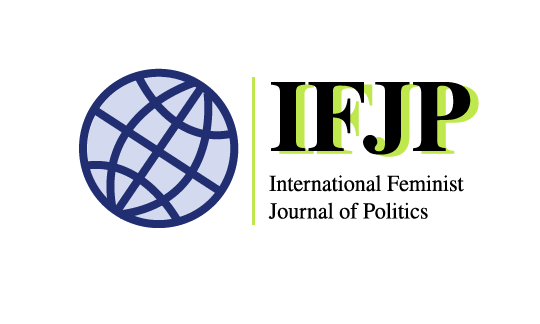Pregnancy in United States Immigration Detention: The Gendered Necropolitics of Reproductive Oppression
By: Amanda Heffernan (she/her/hers)
I first became aware of the impact of the U.S. immigration enforcement system on pregnant migrants while working as a midwife in Tucson, Arizona, a community 70 miles from the Mexico-U.S. border. As a midwife, I had clients miss prenatal appointments because their partner had been deported or detained. I walked past Border Patrol agents guarding the doors of women in labor at the hospital where I attended births. I got to someone who fled her home in Central America due to political and family violence, became pregnant while migrating through Mexico, and eventually spent several months of her pregnancy in immigration detention. I started looking for resources to help me understand and contextualize these experiences. As I read, an interdisciplinary conversation took shape between disparate literatures that each had something to say about the experience of pregnant migrating people affected by U.S. immigration enforcement.
First, I discovered the impact of necropolitical theory on migration scholarship (and vice versa). First articulated by Achille Mbembe, necropolitics builds on Foucault’s biopolitics to explore the ways that states enact power not just through the management of life, but also through death. Clearly, the United States’ deadly “prevention through deterrence” policy at the southern border is an example of necropolitics, of borders and immigration enforcement used as technologies of death. I then encountered the work of feminist scholars like Rita Segato, Ariadna Estévez, and Sayak Valencia who critique and deepen necropolitical theory with gendered analyses of necropower in Latin America. In Mexico and Central America, necropolitical wars for control of natural resources are characterized by practices of terror and dispossession frequently enacted on the bodies of poor (and often indigenous) women. These gendered necropolitical wars drive forced migration to the United States.
When migrants arrive at the U.S.’ southern border, they are met by an increasingly militarized border and an immigration system that criminalizes migration. “Crimmigration” scholars like Martha Escobar draw on the seminal work of Black feminist writers such as Dorothy Roberts to show that the demonization and exclusion of migrant women was built on the history of the reproductive oppression Black women; the “welfare queen” and the “mother of anchor babies” are two sides of the same rhetorical coin. Black feminists of the U.S. reproductive justice movement put their understanding of this intersection into action in September 2020, when they organized in support of Dawn Wooten, a Black nurse who blew the whistle regarding unconsented gynecological procedures performed on migrant women detained at the Irwin County Detention Center. Like U.S.-based reproductive justice advocates, Latin American feminists writing about feminicide, abortion rights, and the Ni Una Menos movement similarly claim the feminized body as a key site of analysis and power.
I interwove these strands to draw my paper’s fundamental conclusion: that the reproductive oppression of detained and excluded pregnant migrants by the U.S. immigration enforcement system is gendered necropolitics at work. As a midwife, I know that pregnancy is a time that holds enormous potential; it is what feminist anthropologist Teresa del Valle calls an encrucijada (crossroads) in a person’s life. When a pregnant person is free to exercise their autonomy, they may choose to end the pregnancy or continue it, with profound effects on the rest of their life. Migrant women caught up in the United States immigration enforcement system, whether in detention or stuck in northern Mexico, can neither access an abortion nor carry a chosen pregnancy to term with adequate support. This foreclosure of possibilities is a form of social death.
This piece was initially conceived when the Trump administration was detaining more pregnant migrants than any U.S. administration ever had before. As I wrote, the administration’s strategy shifted. In 2019, the Trump administration began excluding asylum seekers under the “Remain in Mexico” program. In 2020, using the COVID-19 pandemic as justification, the administration began rapidly expelling migrants and asylum seekers under “Title 42”, a practice that continues today. Then, in July 2021, the Biden administration announced that it would stop detaining pregnant migrants. The literatures I was exploring helped me make sense of these shifting policies as manifestations of many of the same underlying power dynamics. For Trump, the cruelty was the point. Policies like family separation were forms of expressive violence. As I wrote in a recent op-Ed, the Biden administration “engage[s] in a different kind of rhetorical game. They express public concern about migrants’ well-being and cultivate good press about “humanitarian exceptions” to immigration policy in a bid to put their supporters’ consciences at ease,” creating what Elise Andaya calls “temporary zones of inclusion”. Rather than accepting the limited or temporary inclusion of pregnant people or others deemed exceptions to harsh immigration policies, our advocacy should radically affirm the embodied personhood and reproductive autonomy of all migrating people.
Read the full article here: Pregnancy in United States immigration detention: the gendered necropolitics of reproductive oppression
Each blog post gives the views of the individual author(s) based on their published IFJP article. All posts published on ifjpglobal.org remain the intellectual property and copyright of the author or authors.
Amanda Heffernan is a midwife, educator, parent, and PhD student at the University of New Mexico College of Nursing. Her work focuses on the intersection of migration and reproductive justice in North America. She recently moved back to Washington state after eight years practicing midwifery in Arizona in tribal and community health settings, including four years in the borderlands in Tucson.



